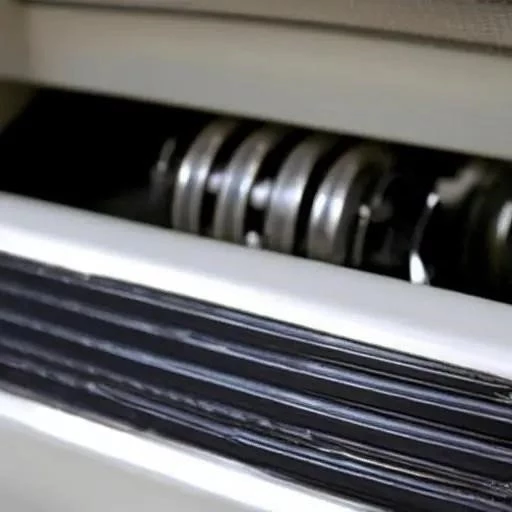
Imagine the scene: you’ve just arrived at your destination, the key is turned, and yet, with a disconcerting shudder, your car engine stubbornly refuses to fall silent. That lingering rumble, that unsettling cough after the ignition is off – this isn’t just a quirky habit of an aging vehicle; it’s a phenomenon known as car engine dieseling, or “run-on.” For decades, this automotive anomaly has perplexed drivers and engineers alike, transforming a simple engine shutdown into an unexpected, miniature drama. While often associated with the carburetors of yesteryear, the ghost of dieseling can, surprisingly, still haunt even more contemporary internal combustion engines under specific, albeit rare, conditions. It’s a subtle yet significant indicator of underlying mechanical or fuel system imbalances, prompting a deeper look into the intricate dance of combustion.
For many, witnessing an engine continuing to run after being commanded to stop can evoke a sense of unease, suggesting a loss of control over one’s own machinery. This isn’t merely an inconvenience; persistent dieseling can signal inefficiencies, increased emissions, and potential long-term wear on critical engine components. However, by integrating profound insights from advanced material science and sophisticated engine management systems, the automotive industry is making remarkable strides in understanding and decisively mitigating this peculiar issue. The era of unpredictable engine behavior is steadily giving way to an age of precision engineering and smart diagnostics, promising a future where your vehicle obeys your every command, including the definitive command to power down.
For a clearer understanding of this automotive phenomenon, here’s a detailed overview:
| Category | Description / Information |
|---|---|
| What is Dieseling? | Also known as “run-on” or “after-running,” dieseling occurs when a spark-ignition (gasoline) engine continues to run for a short period after the ignition key has been turned off. This happens because fuel in the combustion chamber ignites from residual heat or hot spots, rather than the spark plugs. |
| Common Causes |
|
| Potential Consequences | Increased emissions, potential engine damage over time (though rare from isolated incidents), driver frustration, and a general indication of suboptimal engine health. |
| Prevention & Modern Solutions | Regular maintenance (spark plug replacement, fuel system cleaning), using recommended octane fuel, ensuring proper engine temperature, and advancements in engine control units (ECUs) and fuel injection systems that precisely cut off fuel and air supply upon shutdown. |
| Official Reference | Society of Automotive Engineers (SAE) International |
The Mechanics Behind the Mystery: Why Engines Won’t Quit
At its core, dieseling is a fascinating, if unwelcome, demonstration of the very principles of internal combustion. In a gasoline engine, ignition is precisely controlled by spark plugs. When you switch off the ignition, these sparks cease, and the engine should stop. However, if conditions are ripe—specifically, if there are hot spots within the combustion chamber and a sufficient air-fuel mixture—the mixture can spontaneously ignite without a spark. These hot spots are often created by accumulated carbon deposits on piston crowns or cylinder heads, which retain heat incredibly effectively, acting like tiny, unintended glow plugs. “It’s like a lingering ember refusing to die out, even after the fire has been deprived of its primary ignition source,” explains Dr. Anya Sharma, a leading automotive thermodynamics expert at Michigan Tech. “The residual heat, combined with a persistent flow of fuel and air, creates a self-sustaining, albeit erratic, mini-combustion cycle.”
Beyond carbon build-up, other factors significantly contribute to this perplexing phenomenon. An engine running at an excessively high idle speed, for instance, allows a richer air-fuel mixture to persist in the cylinders, making it more susceptible to auto-ignition. Similarly, incorrect ignition timing, particularly retarded timing, can elevate combustion temperatures, thus increasing the likelihood of hot spots forming. The quality of fuel also plays a pivotal role; lower-octane gasoline, being less resistant to pre-ignition, can exacerbate the problem. Modern engine design, however, has made significant strides in combating these issues. Advanced fuel injection systems precisely meter fuel, and sophisticated engine control units (ECUs) are programmed to cut off fuel and air supply instantaneously upon shutdown, effectively starving any potential after-run scenario. This meticulous orchestration of components ensures a clean, swift cessation of engine activity.
A Future of Silent Shutdowns: Engineering Solutions and Driver Empowerment
While dieseling was once a more prevalent nuisance, especially in vehicles of the 70s and 80s, contemporary automotive engineering has largely relegated it to the annals of history for most new vehicles. Fuel injection systems, which replaced carburetors, offer far superior control over fuel delivery, allowing for an immediate cut-off of fuel when the ignition is turned off. Furthermore, the advent of sophisticated sensors and engine management software continuously monitors engine parameters, preventing the conditions conducive to dieseling from even developing. “The precision with which modern ECUs manage engine operation is simply unparalleled,” states John K. Peterson, a senior engineer at a leading global automaker. “By meticulously controlling fuel maps, ignition timing, and idle speeds, we’ve virtually engineered out the environment where dieseling could thrive.”
For owners of older vehicles, or those experiencing rare instances of dieseling in newer models, prevention is remarkably straightforward. Regular maintenance, including spark plug replacement and fuel system cleaning, can significantly reduce carbon build-up. Using the manufacturer-recommended octane fuel is also crucial, as it provides the optimal resistance to pre-ignition. Additionally, ensuring your cooling system is in top condition prevents engine overheating, which can contribute to hot spots. The automotive industry, driven by innovation and a relentless pursuit of efficiency, continues to refine engine technologies, making vehicles not only more powerful and fuel-efficient but also more reliable and predictable in every operational aspect, including the moment you decide to turn them off. The future promises an even smoother, quieter, and more responsive driving experience, free from any lingering mechanical murmurs after the journey concludes.
